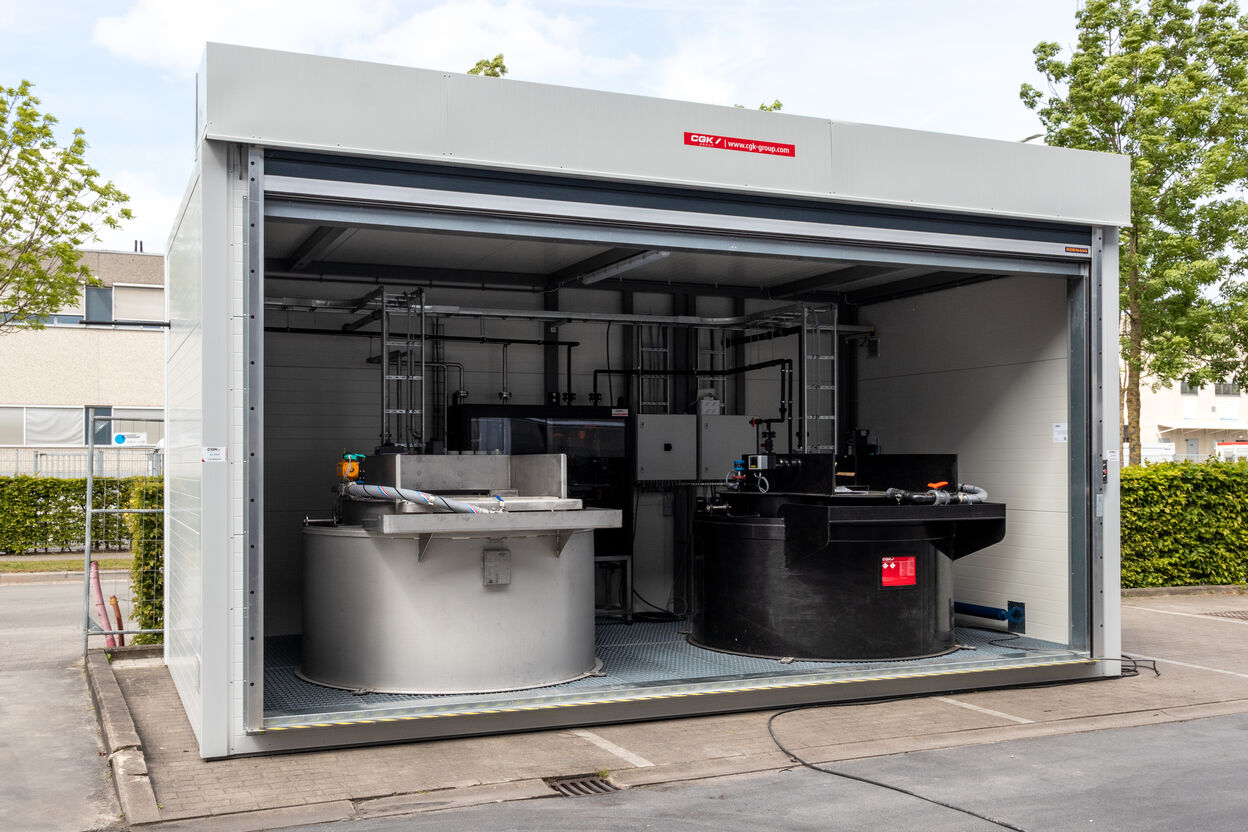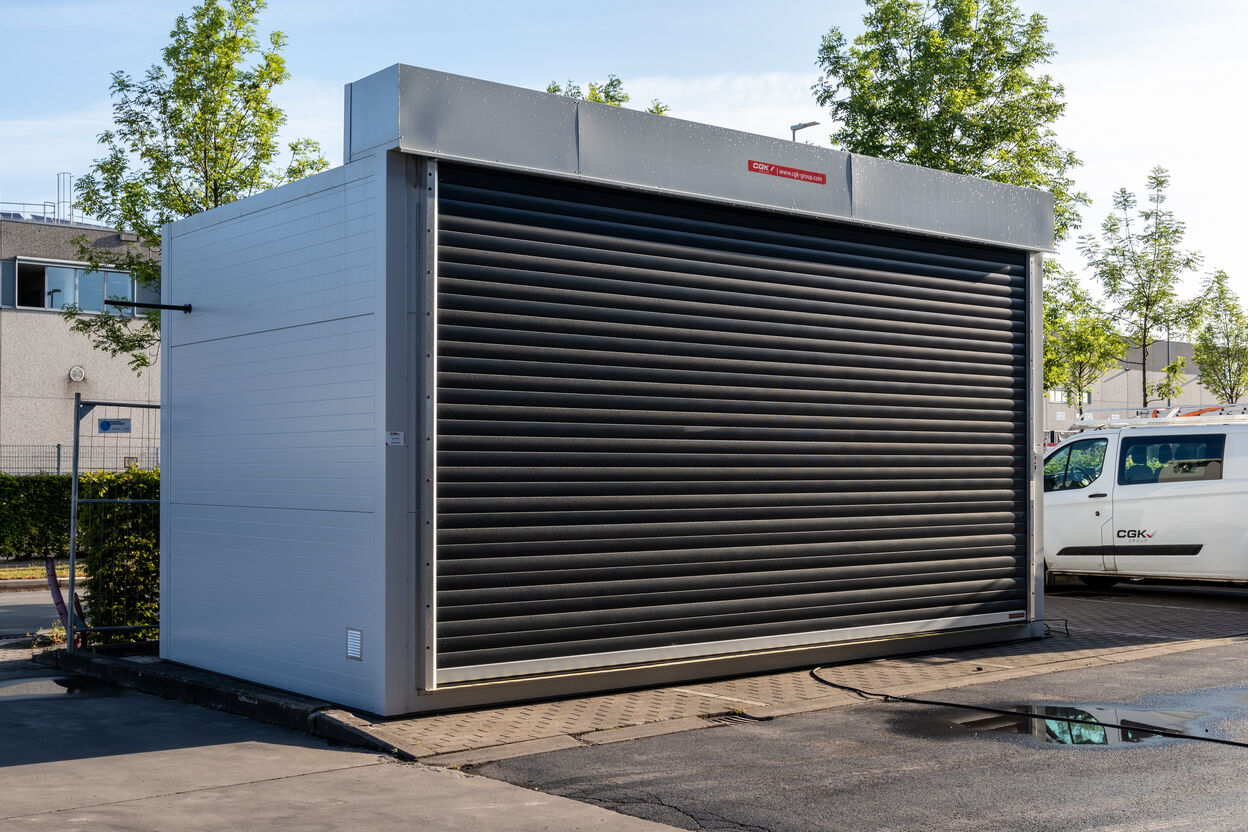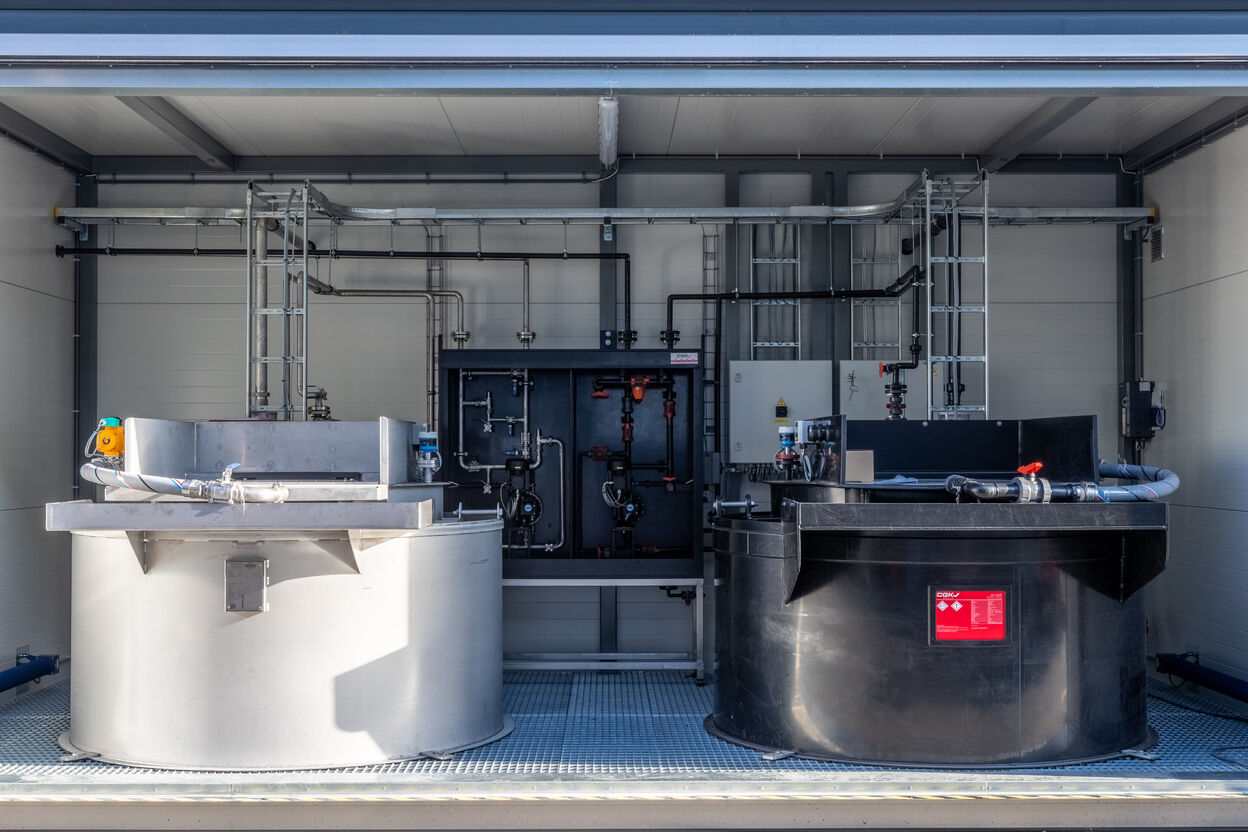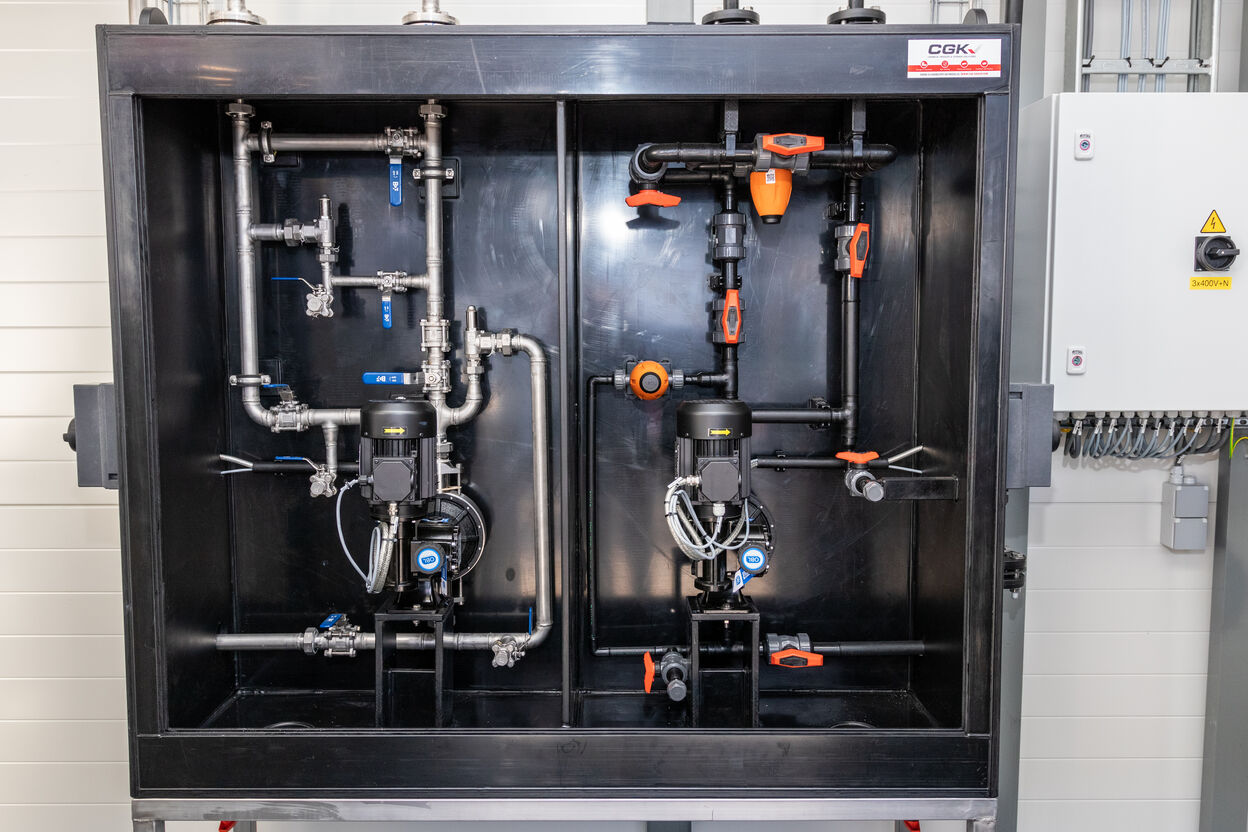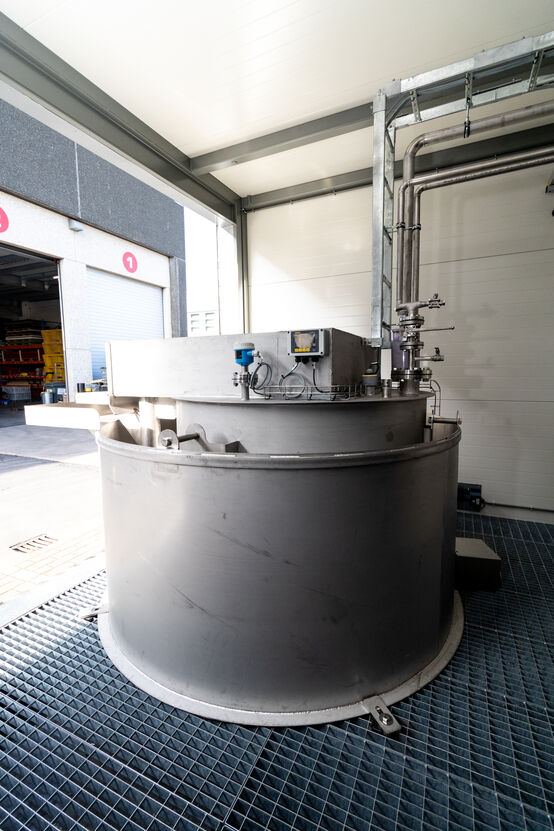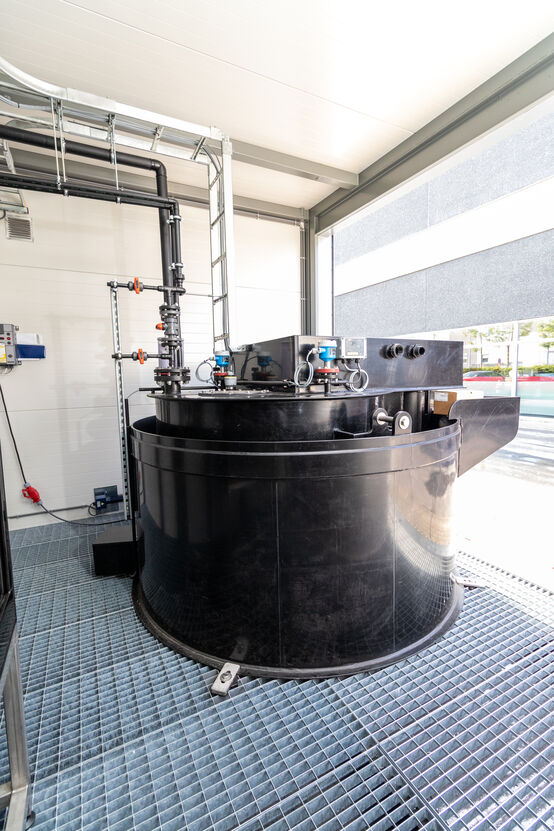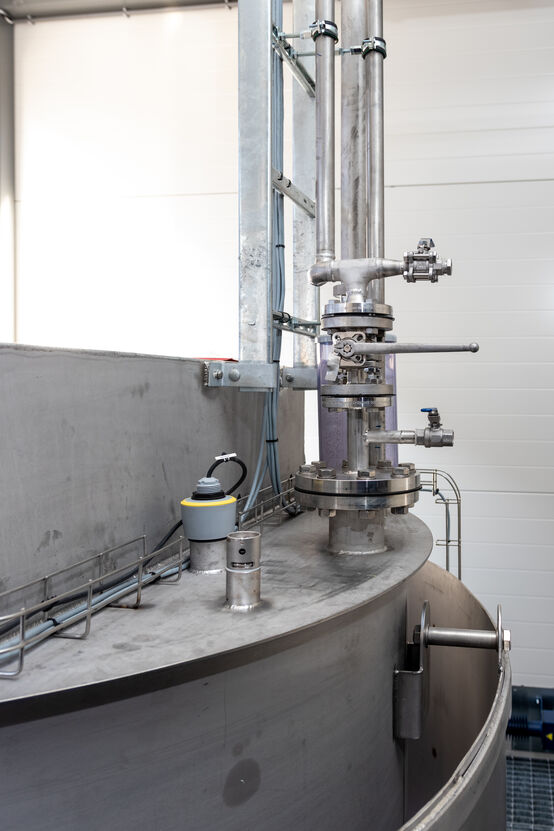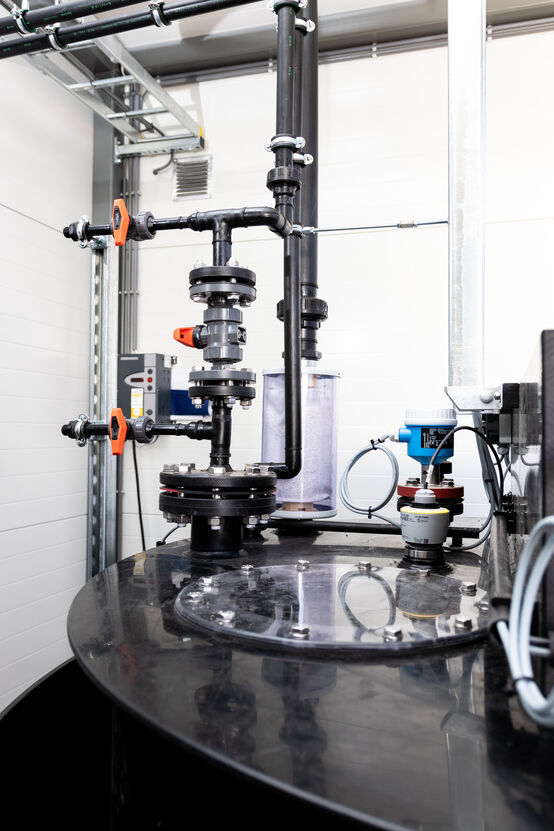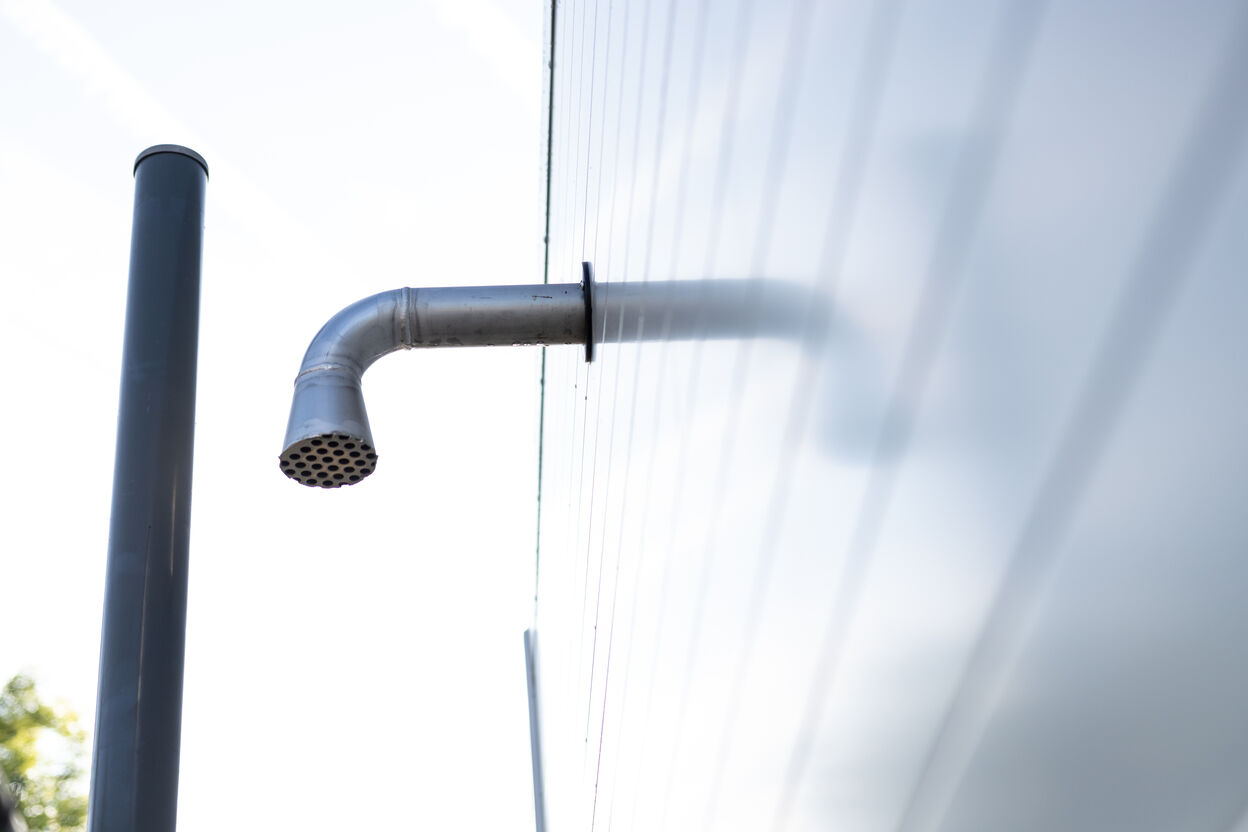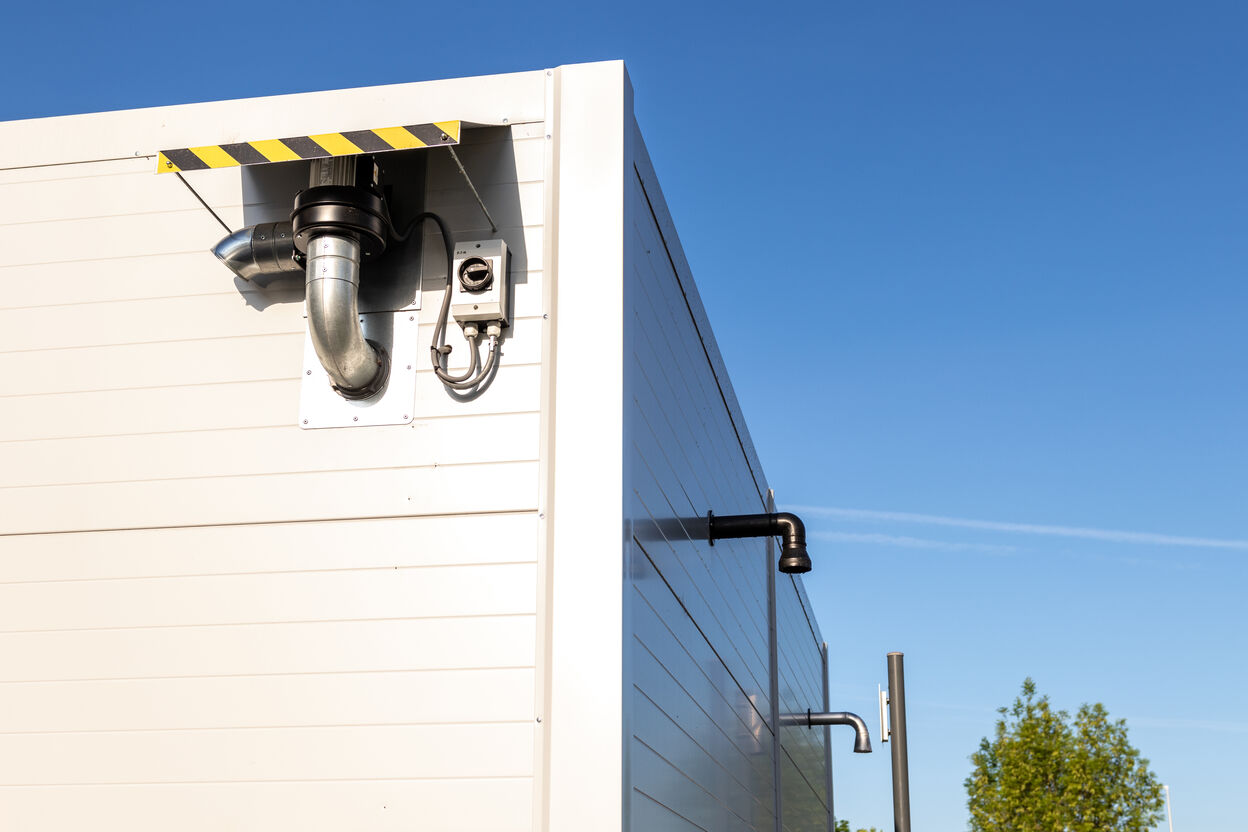Safe storage and dosing of harmful substances (Shell)
The customer
Shell is one of the world's largest energy and petrochemical companies.
Purpose
Together with the customer, we looked for a new set-up to store and dose their noxious substances (nitric acid and hydrochloric acid).
Installing such set-ups inside the building was not an option, due to lack of space and the nature of the chemicals. Construction of an additional building was not (cost) efficient and difficult to achieve in the short term.
Problem-solution
This project was developed from A to Z by CGK: From concept and automation to assembly and testing.
- We came up with the idea of working with an acid-resistant storage container in which the chemicals can be mixed and distributed.
Central in the container, we installed a pump cabinet with the necessary flush valves. Through an IBC, the chemicals are routed via the pump cabinet to the main tank(mother-daughter system) where 2 pipes leave for the associated pumps.From there, pipes can be installed on the exits to distribute the chemicals. All wall passages for the pipes are 100% watertight.
- For the pipework, we used both stainless steel for the corrosive nitric acid and plastic (HDPE) for the hydrochloric acid. This required 2 different welding techniques.
- There is a legally required tank vent with filter on each tank. This scrubber neutralises the harmful vapours of the nitric and hydrochloric acid before they are emitted into the air.
- The mother-daughter set-up is equipped with an overfill safety device. The tank's valve closes automatically if too much liquid enters, so it can never overflow.
- The level in the tanks is monitored with ultrasonic measurement, so one can perfectly measure the percentage of liquid in the tank at any time. A safe type of measuring equipment because it is not in direct contact with the corrosive liquid.
- Each system can handle 1500 litres and therefore always has a 500-litre buffer. So when the notification comes that the tank is empty, there is still plenty of time to replace the IBC.
- The container is on a large drip tray to catch any leaks.
- The container is fully insulated and can be ventilated.
- The container was assembled and tested in the CGK workshop.
- The finished container was moved by truck to the customer's site, where it could immediately be put into use by connecting to their PLC system.
